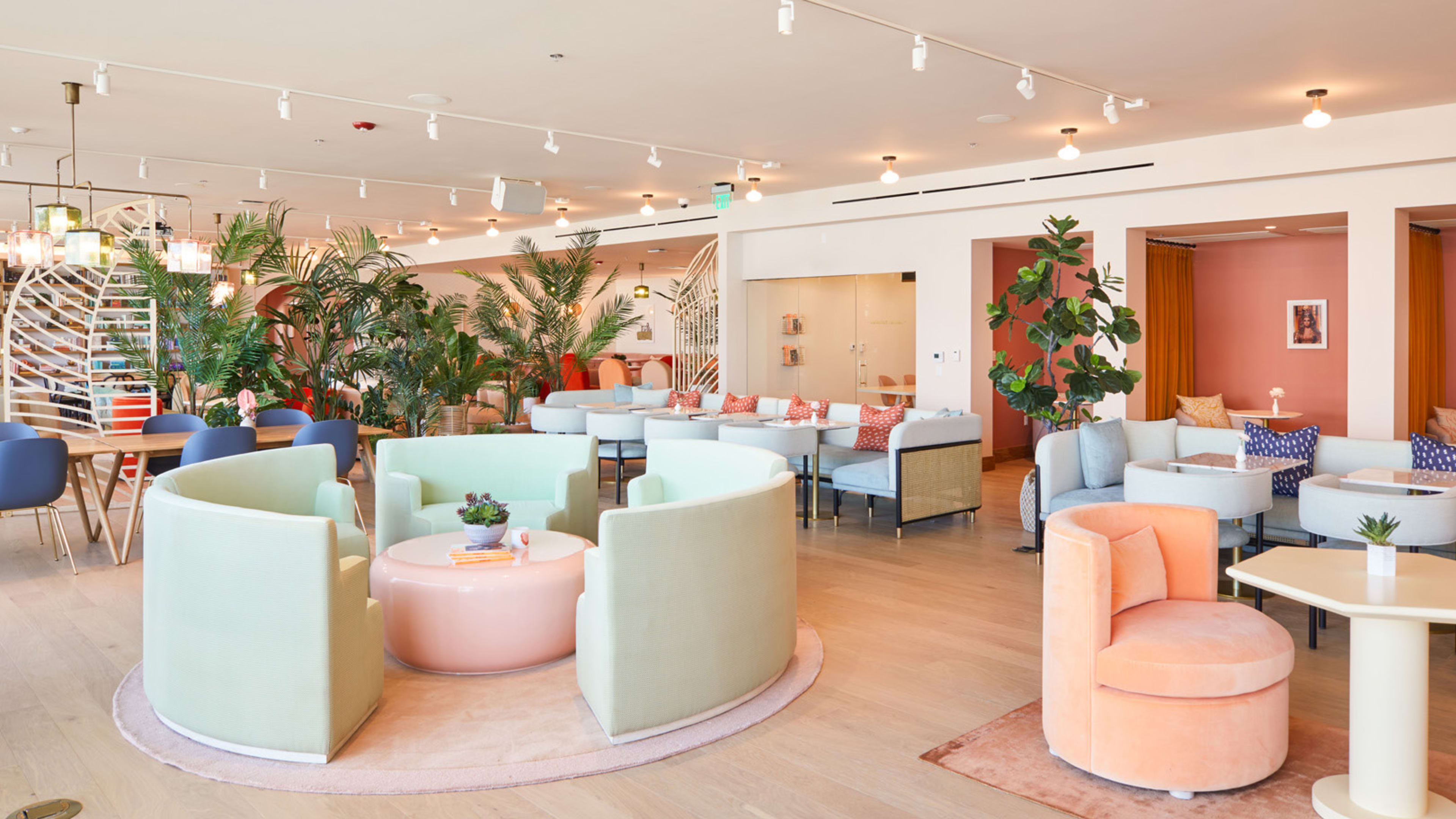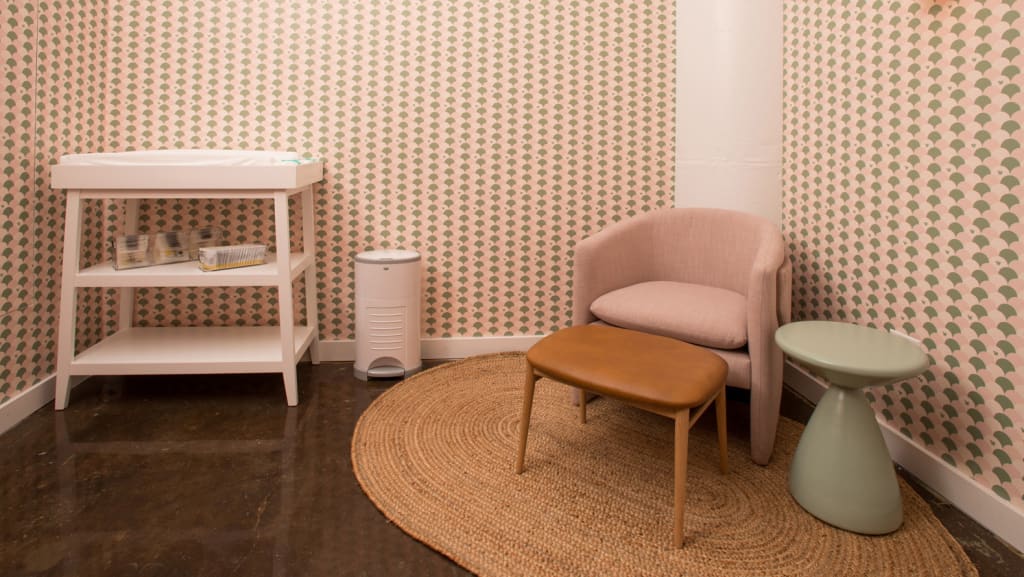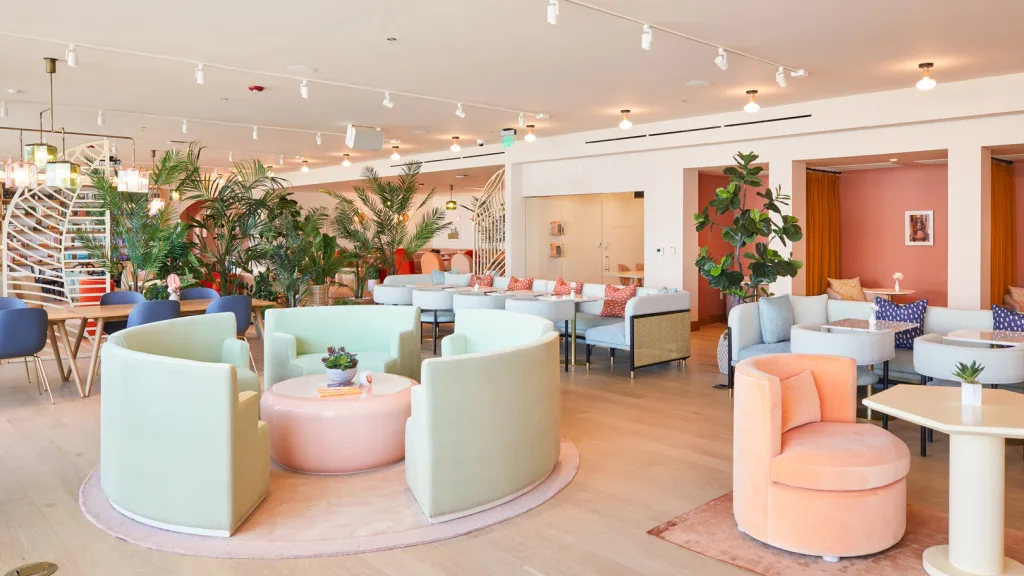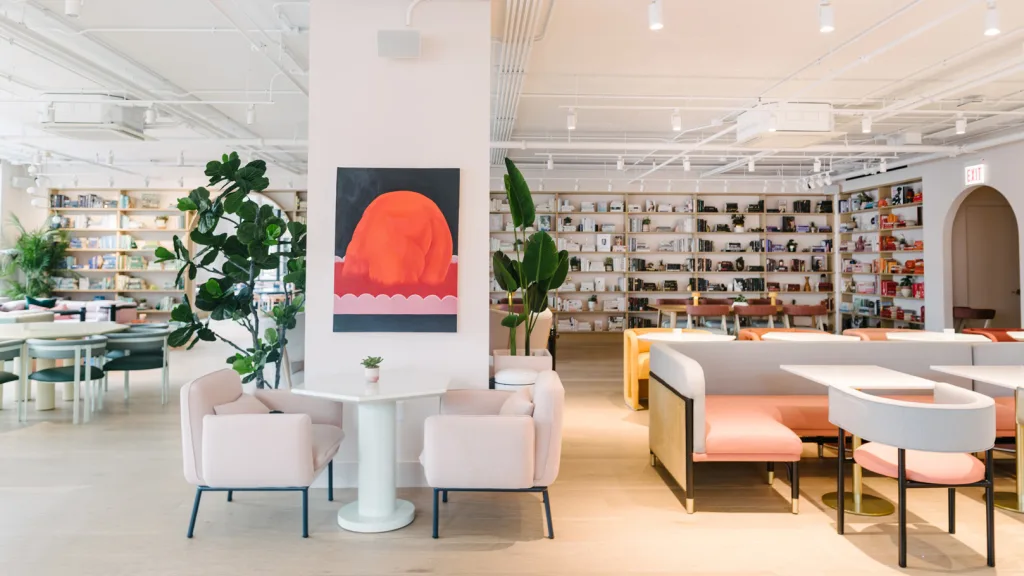Most built spaces in our world are designed for the average man. Corporate office temperatures are often based on a standard from the 1960s that used a 154-pound, 40-year-old man in a suit as the standard occupant–forcing women to wear layers and cover themselves in blankets to stay warm. Even Le Corbusier wanted to design buildings based on a “human scale” determined by a six-foot-tall man.
But The Wing, a women-led coworking space and social club, prides itself on designing spaces for women first. Since the company was founded in 2016, its designers have worked with outside manufacturers to adjust seat heights and depths to fit the average woman rather than the average man. Now, the company is scaling up an internal design team that has outfitted 80% of The Wing’s two newest locations in Los Angeles and Chicago with custom furniture. “Ergonomics are very important because women are using our spaces for working for hours per day,” says Laetitia Gorra, senior designer at The Wing.
The Wing’s design ambitions are greater than custom furniture, though. It is also branching into designing entire rooms for other companies, bringing its female-focused design sensibility–and its brand–into the greater corporate world.

The design team is led by Gorra and includes two other designers, but the company plans to scale up as they continue to expand The Wing’s coworking spaces across the country and tackle external projects.
As for the team’s design process, Gorra points to an Italian-style serpentine couch at the company’s new L.A. location that can seat up to six women, which was designed with ideal seat depth and height for women’s bodies. To go with the couch, her team designed a table that can be pulled over to the couch so women can work there comfortably. The furniture, which the team designs in-house and then sends to a manufacturing partner to produce overseas, has symbolic value, too: “We use octagonal-shaped tables in a lot of our spaces,” Gorra says. “The thought there is community and being all equal at the table, all looking at each other and being able to converse while working.”
Perhaps the best and most common example of how most office spaces are not designed with women in mind is the sorry state of the corporate lactation room. The Affordable Care Act requires that many companies to provide a pumping room for new moms that has a door and that’s not a bathroom stall, but often that means a dirty, dimly lit supply closet or worse. When companies do have nicer facilities, they’re often commandeered by men for their own purposes: Famously, former Uber CEO Travis Kalanick would meditate in his company’s lactation rooms.
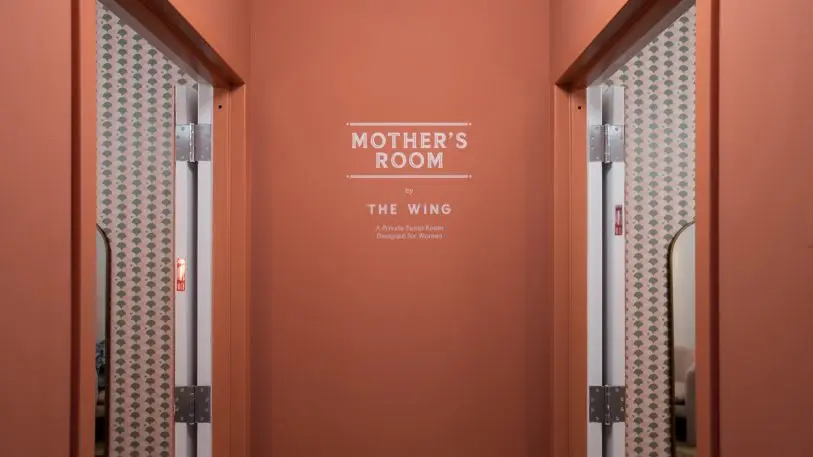
In contrast, each branch of The Wing has a mothers’ room that’s outfitted with amenities like a fridge and sink to make pumping as convenient and comfortable as possible. There’s a comfy chair, a place to put your feet up, and a changing table. “We designed these to be an extension of your home and make women feel as comfortable as possible in a time that’s a very stressful time,” says Gorra, who is a mother of two and said she had been forced to pump in storage closets. “We’re trying to create this oasis for these mothers.”
The Wing is now designing spaces for other companies that are looking for this kind of experience to support their female employees–starting with the lactation room. Last fall, the New York-based developer Two Trees, which is behind residential and commercial developments in Brooklyn, reached out to The Wing to request the company’s design services for lactation rooms in three of its commercial properties in Dumbo. Earlier this week, Two Trees opened six Wing-designed lactation rooms across these buildings, which collectively house the offices for 500 companies and about 5,000 employees. The pale pink rooms are full of The Wing’s branding, complete with a sign that identifies them as a “[Wing] lactation outpost.”
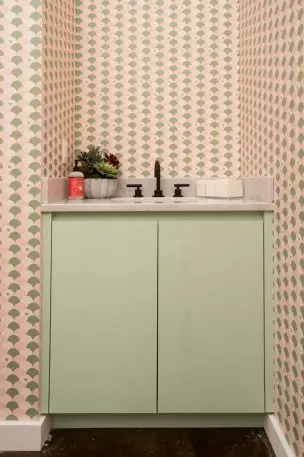
While some of the developers’ larger tenants already provide pumping rooms for their employees, many of the smaller ones do not, and The Wing designed pumping rooms for these tenants specifically. They’re a perk for tenants just as much as they are for moms: Lactation rooms are important for companies because they help with retaining new mothers as employees.
“Employers who are increasingly more conscious of creating spaces for working women and for moms came to us as an authority on how to design those spaces,” says Audrey Gelman, CEO and cofounder of The Wing. The Two Trees rooms that Gorra and her team designed are very similar to what The Wing’s members have access to, though these don’t have a fridge because they’re not dedicated to any one office. The idea is that women will be able to come to the room from across the building and then take their milk back to their offices afterward.
For Gelman, these Wing-branded rooms are a way to bring the company’s ethos outside the walls of its coworking spaces and into the broader corporate world. “For us, it’s an advancement of our mission to know you don’t have to be in a Wing space to have our philosophy in your work environment,” she says. Beyond being a great way to build the startup’s brand, the designs are probably good for recruitment too, give working women a taste of what membership at the exclusive club might be like.
Gelman says that there’s been a lot of interest in The Wing’s design services from other companies as well, and that means there are more projects like this in the works. These lactation rooms, combined with the custom furniture, are transforming The Wing into a bona fide design company.
Recognize your brand’s excellence by applying to this year’s Brands That Matter Awards before the early-rate deadline, May 3.
